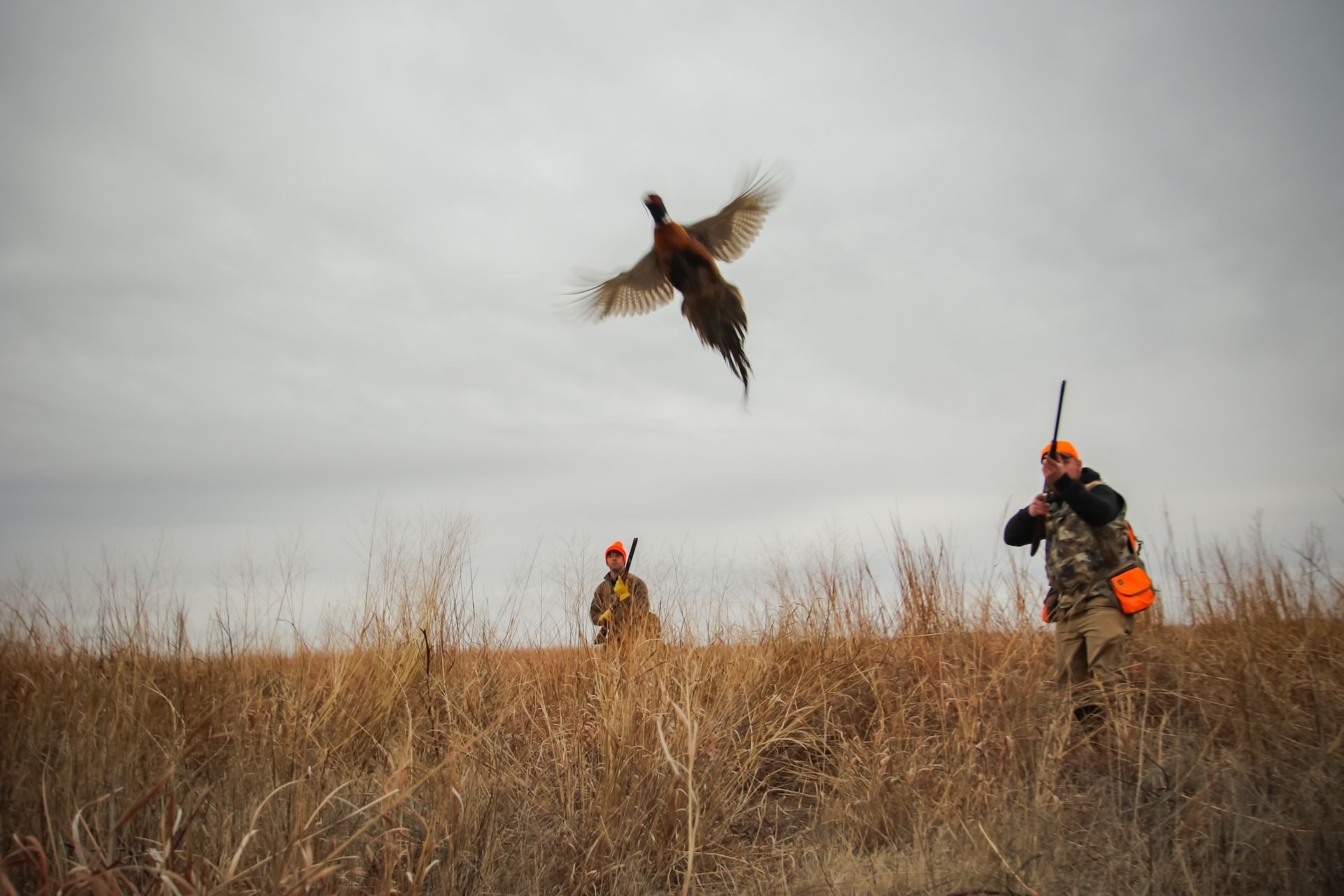Field Guide / Small Game
How to Hunt Pheasant: The Field-Tested Upland Guide
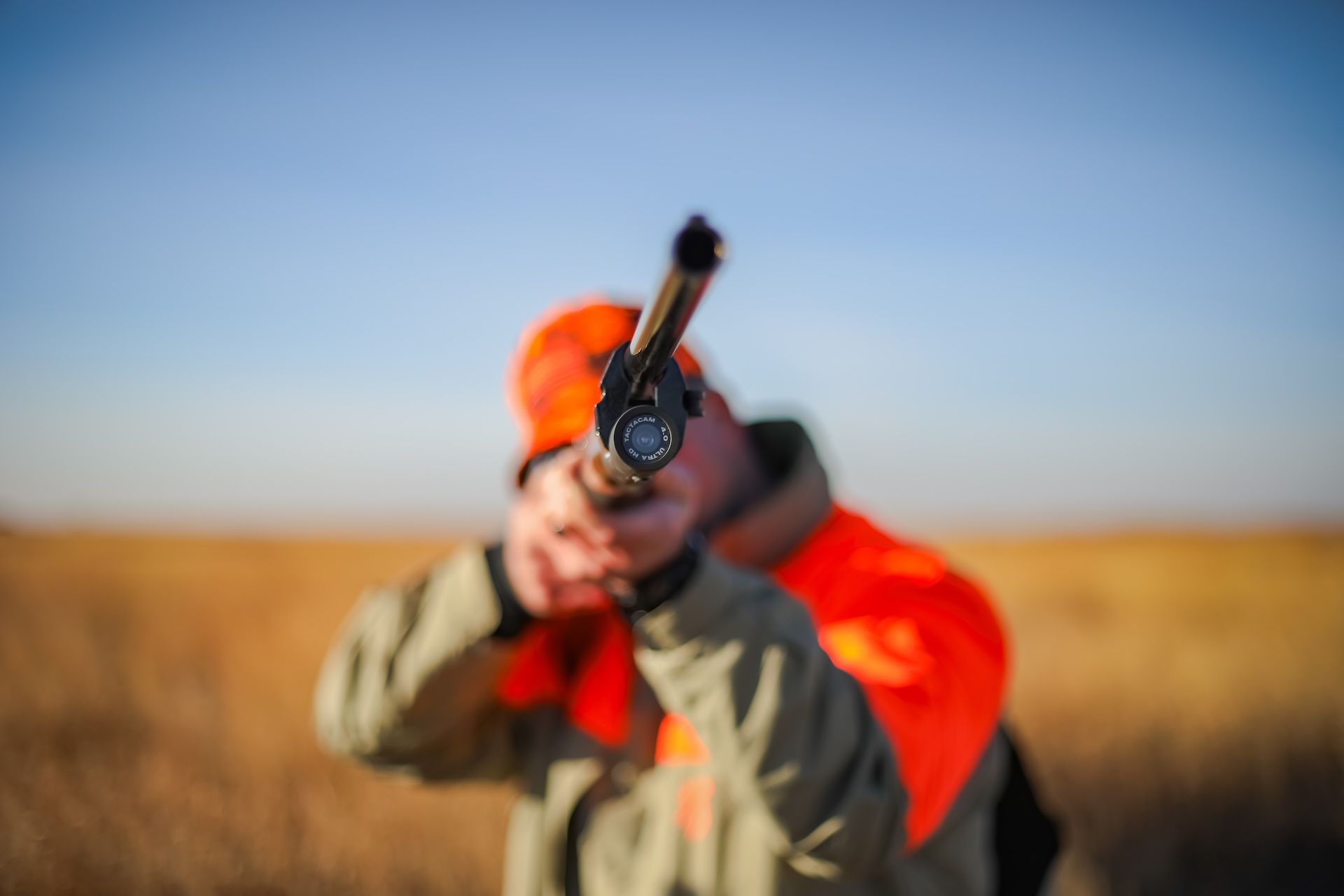
13 Minute Read
Just as with any other type of hunt, pheasant hunting is composed of far more intricate details beyond just walking through a field hoping for a bird.
The wild rooster is a clever target, wily and accustomed to pressure. If you want to fill your vest this year's pheasant season, you’ll need to understand the ins and outs of the hunt, as well as know your gear, how to read cover and anticipate movement, and make sure you can hit your shots when the flush comes.
Today, the pheasant hunting experts of 10 Gauge Outfitters draw on years of upland hunting experience to provide you with the tactics, the mindset, and the details that separate amazing hunts from the hunts that leave something to be desired. Keep reading to learn how to hunt pheasant from the pros!
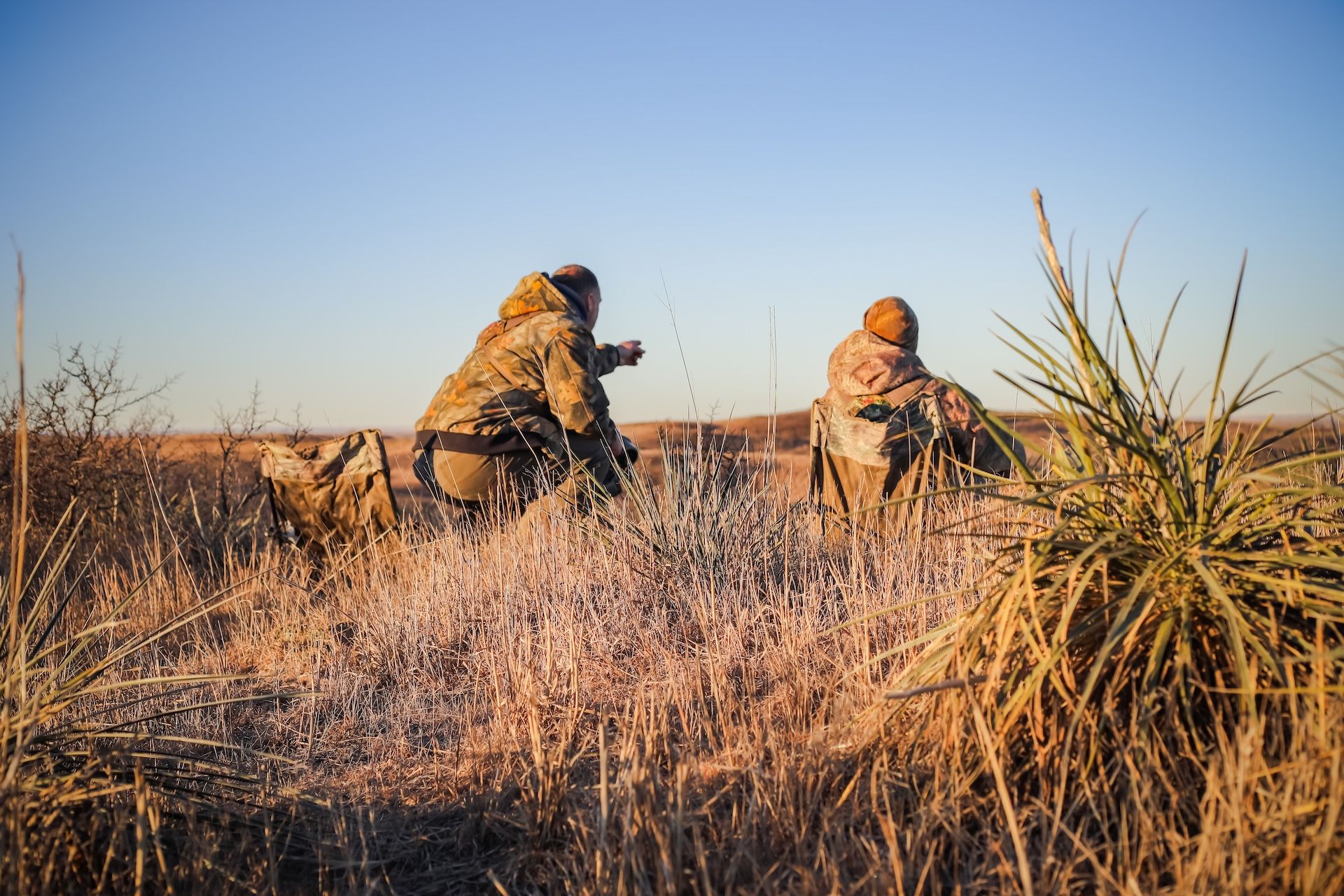
How to Scout for Pheasants in Fields and Cover
A good, successful pheasant hunt starts long before you shoulder your shotgun to take your shot. Something as simple as mapping the time and field time where you plan to find birds is fundamental.
Start by examining aerial imagery (it's especially helpful to use map layers with HuntWise) to identify those transition zones:
- Tall grass or CRP strips abutting harvested corn or milo fields
- Brush or cattail pockets pressed up against fields
- Linear features like drainage ditches, weed belts, or hedgerows
These seams are most typically where roosters slip through when pressured.
When you arrive at your hunting spot, it's also best to arrive there early and glass the edges, ditches, and field corners. Look for tracks, matted grass, feathers, and even droppings.
It is very common for a large number of hunters to walk through big fields and never see birds simply because they miss the edges and transitions. On big grass fields, it’s always helpful to work the interior once the edges are pressured, as some birds will hole up deep in cover that goes unchecked.
In the later season, expect the thick stuff (cattails, shelterbelts) to hold more birds than the open fields you might hunt at season open.
What Gear Do You Need to Hunt Pheasant?
On a pheasant hunt, you’ll almost guarantee to be traversing rough ground, flushing fast birds, and you need to be well-equipped to execute clean shots on the fly. That is why your gear needs to be up to the same caliber as the hunt you are on and meet that hunt's specific requirements.
Shotgun and Choke

While some hunters have their preferences when it comes to shotgun size, the 12-gauge remains the reliable, industry-favorite workhorse.
It's best for hunters new to the world of pheasants to start with a modified choke to allow for versatility. Now, in tight cover early season (standing crops, near dogs), an Improved Cylinder or light-Modified is the perfect option.
When roosters flush wild in late season, a lot of hunters will then move toward Improved-Modified.
Ammunition
Roosters have bones and feathers that will absorb pellets, so it's best to avoid under-loading.
Most avid pheasant hunters will elect to go with shells of 1-1/4 oz or more (in 12-gauge) when allowed. Earlier in the season, when flushes tend to be closer, a #6 shot works well.
As cover thins and birds flush farther, the best practice is to upgrade to either #5 or #4 shot.
Clothing and Boots
Do you know what to wear pheasant hunting? When out in the field, you can expect to get a nice personal with everything from briars and stubble to brush and cattails.
To avoid worrying about the environment just as much as the hunt itself, go with brush pants or chaps to protect your legs. On top of that, look for waterproof, ankle-supporting boots designed for all-day walking on varied terrain.
Lastly, wearing a blaze orange vest is a must-have in most states, and make sure to wear it properly.
Beyond the blaze orange, it's a good idea to also layer your clothing underneath. Just make sure to check the weather in the region and layer accordingly.
Essentials
While the obvious must-haves include your choice of shotgun, your hunting apparel, and an orange vest, the list does not end there. Safety is of utmost importance (hence the orange vest), so bringing eye and ear protection is a no-brainer.
As we’ve mentioned, a vest and game bag designed for pheasant hunting can really improve your hunt.
Then there are the other basics, such as a field knife and/or shears for processing birds, and flagging tape if you’re hunting solo and might need to mark a downed bird.
Of course, if you have a dog, you’ll need everything to care for your partner throughout a full day of hunting:
- Leash (if public areas require leashes outside of fields)
- Water
- Tracker / GPS Collar
- Food/snacks
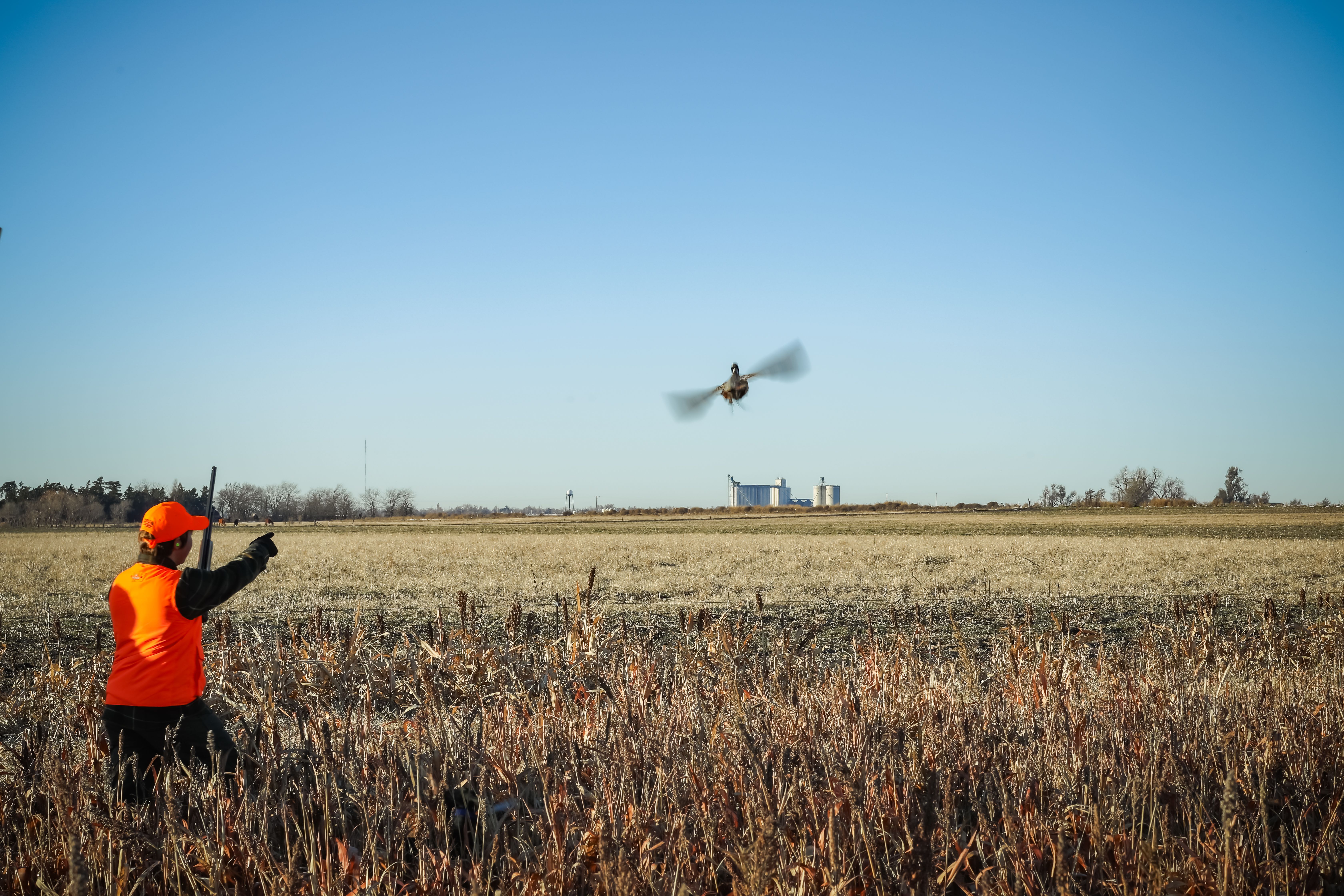
Understand Pheasant Behavior
Even if you are familiar with other types of bird hunting, roosters don’t behave like any other birds. Over time, they have evolved to survive, run when they can, and fly only when they must.
The daily cycle of a pheasant is actually quite predictable:
- At dawn, they will typically leave roost cover (often tall grass, cattails, or thick brush) and move to fields to feed.
- Late afternoon, they reverse that route, moving from feeding fields back into cover to roost.
- Midday, they often loaf in canopy cover and may not move much.
Having a strong understanding of this “feed-loaf-feed” pattern gives you the tactical windows to strike.
Also remember: pheasants will run first, only to flush later. They may hold until the edge of cover, or run along a ditch, even sometimes hedging before popping up.
In late season or in high-pressure areas, birds flush farther and more unpredictably. You’ll need to anticipate that, choose your cover accordingly, and be ready to shoot.
When To Hunt Pheasants
Timing your pheasant hunt is as important as where you decide to go pheasant hunting.
The best windows to take home some trophy pheasants are early morning (first legal shooting hour) and the last hour or two of daylight. These correspond with cover/field transitions when birds are moving.
Now, midday hunting can work, especially late season or when you know birds are tucked into thick cover, but you should expect slower action and more walking.
Seasonality
What should you know about hunting strategies based on different points during the season? You'll want to adjust your pheasant hunting strategy with the following insights in mind:
- Early season (October) often offers up more birds for hunters, but cover is abundant, and birds tend to be less concentrated.
- Mid-season (after harvest) can bring better action because birds typically compress into remaining cover and food sources.
- Late season (December/January) offers some bigger challenges but also some good payoffs. At this point in the season, the roosters are more aware, cover is tight, and only the smart birds are left in the field.
Remember: weather shifts (cold snaps, snow, wind) can push birds into predictable cover, so some hunters look to exploit those. Use HuntCast to see real-time weather forecasts to help you plan your hunt.

Where to Hunt Roosters
Knowing the geography is one thing, but knowing the micro-habitat is another whole side of the hunt.
There are many states that offer great pheasant hunting, and the key is finding the best areas in your state.
The best habitats include:
- Grass-to-Crop Edges: A strip of tall native grass or CRP directly adjacent to a harvested corn or sorghum field is a classic go-to. The birds tend to hide in the grass, and come to feed in the crop. You’ll want to position right along the grass side and hunt just inside it.
- Cattails, Wetlands, and Shelterbelts: In icier weather or heavy snow conditions, roosters tread into cattail marshes or multi-row shelterbelts for thermal cover. These spots often get overlooked because they’re tough ground, but if you can push through them, you can quite often catch birds holding tight.
- Linear Corridors: Fencerows, hedgerows, drainage ditches, and pipeline/utility rights-of-way all act as sort of connectors across fields. Birds will often use these to move around, so you can leverage them to box pheasants in.
- Under-hunted Pockets: While not the obvious choice, small patches of brush and little islands of cover next to a field are gold. On public land, especially, the obvious blocks get walked heavily. Look for the little patch off the trail, and you can even flag it in your mind or via HuntWise to revisit next time.
Consider an Outfitter
Depending on your state and your budget, your best options might be to explore booking a hunt with a pheasant hunting outfitter, like 10 Gauge Outfitters. This is an especially great option for those new to pheasant hunting and are looking for guidance and a better chance at bringing home some roosters.
Most avid pheasant hunters will elect to go with shells of 1-1/4 oz or more (in 12-gauge) when allowed. Earlier in the season, when flushes tend to be closer, a #6 shot works well.
As cover thins and birds flush farther, the best practice is to upgrade to either #5 or #4 shot.

How to Hunt Pheasant: Solo, With a Dog, or in a Group
One of the aspects of pheasant hunting that draws so many hunters to the pheasant hunting world and the bird hunting world in general is the use of hunting dogs and the experience of hunting with a group. Here are a few pheasant hunting tips based on how you hunt.
Hunting Solo, No Dog
While hunting dogs certainly add an entirely new element to a pheasant hunt, they are not a “must-have."
Hunting alone without a hunting dog means you’re the scout, the walker, the shooter, all in one. Your best bet is to move slowly and use a stop-and-go rhythm. In many hunting fields, the pheasants tend to flush when they see you moving in their direction, so when you’re alone, you must be extremely disciplined.
Just like hunting other animals like white tail or turkey, hunt into the wind or across it so your scent carries behind you and not towards the birds. Use the WindCast feature in the HuntWise app for real-time wind direction insights to plan (or change) your approach.
As we mentioned earlier, work edges and look to cover smaller areas rather than trying to do an entire field. When you shoot one, mark the fall point, then locate the bird as quickly as possible. Countless solo hunters have lost birds because they remember the spot wrong or simply put off finding the bird.
Hunting With a Dog
Pheasant hunting is an amazing experience in any capacity, but a good bird dog completely transforms the hunt.
Flushers (Labs, Springers) help by kicking birds into the air, whereas pointers (German Shorthairs, Setters) will lock up and help you pinpoint hidden roosters.
But with engaging hunting dogs on the pheasant hunt comes responsibility:
- Keep the dog in your zone
- Know where your dog is before you shoot
- Wear blaze gear for visibility
- Carry water and check paws for burrs
- Maintain obedience commands (sit, stay, heel)
Make sure not to send a dog ahead or risk shots through dense cover with dogs free-roaming.
Group Drives
Group drives are when you drive fields with a team, which requires extreme coordination.
Make sure to set roles:
- Drivers pushing forward
- Blockers at field ends or escapes
Maintain line spacing (15-20 yards typical) so birds don’t have the opportunity to run between you. Communicate so as to avoid any sort of confusion or accident, many hunters prefer to use hand signals.
After the push, do a second sweep back through the field, as many birds that flushed or ran early will settle into nearby cover and come out during the reverse pass.
As we have harped on throughout this guide, safety is critical. Only shoot safe targets, never when someone or a dog is between you and the bird.
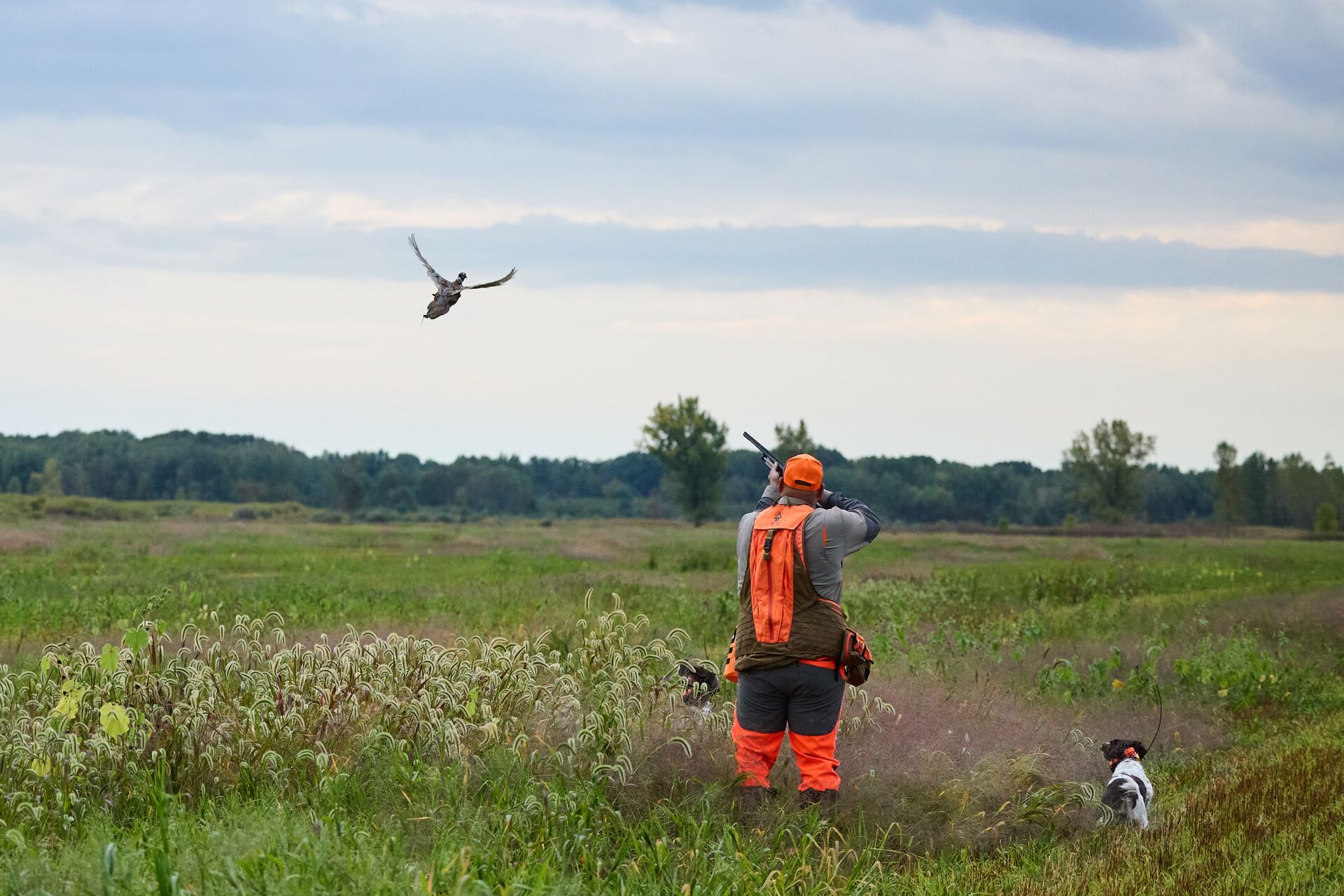
Where to Aim and How to Shoot
Pheasants flush fast, and countless missed birds tend to get away because the shooter aimed too late or at the wrong point.
When a bird erupts, one of the most important focuses is leading properly. Aim ahead of its beak, not at its tail. For crossing shots, give yourself a body-length lead or even more, depending on the speed of the bird.
For birds coming toward you or away, lead upward and toward the bird’s head/upper chest, not the tail. Keep your swing smooth, so you aren't stopping the gun as you pull the trigger.
Make sure to stay within your effective range, so a typical pheasant setup (for example, a Modified choke, #5-#6 shot) about 30-35 yards is reliable. Shots beyond that increase the chance of cripples dramatically.
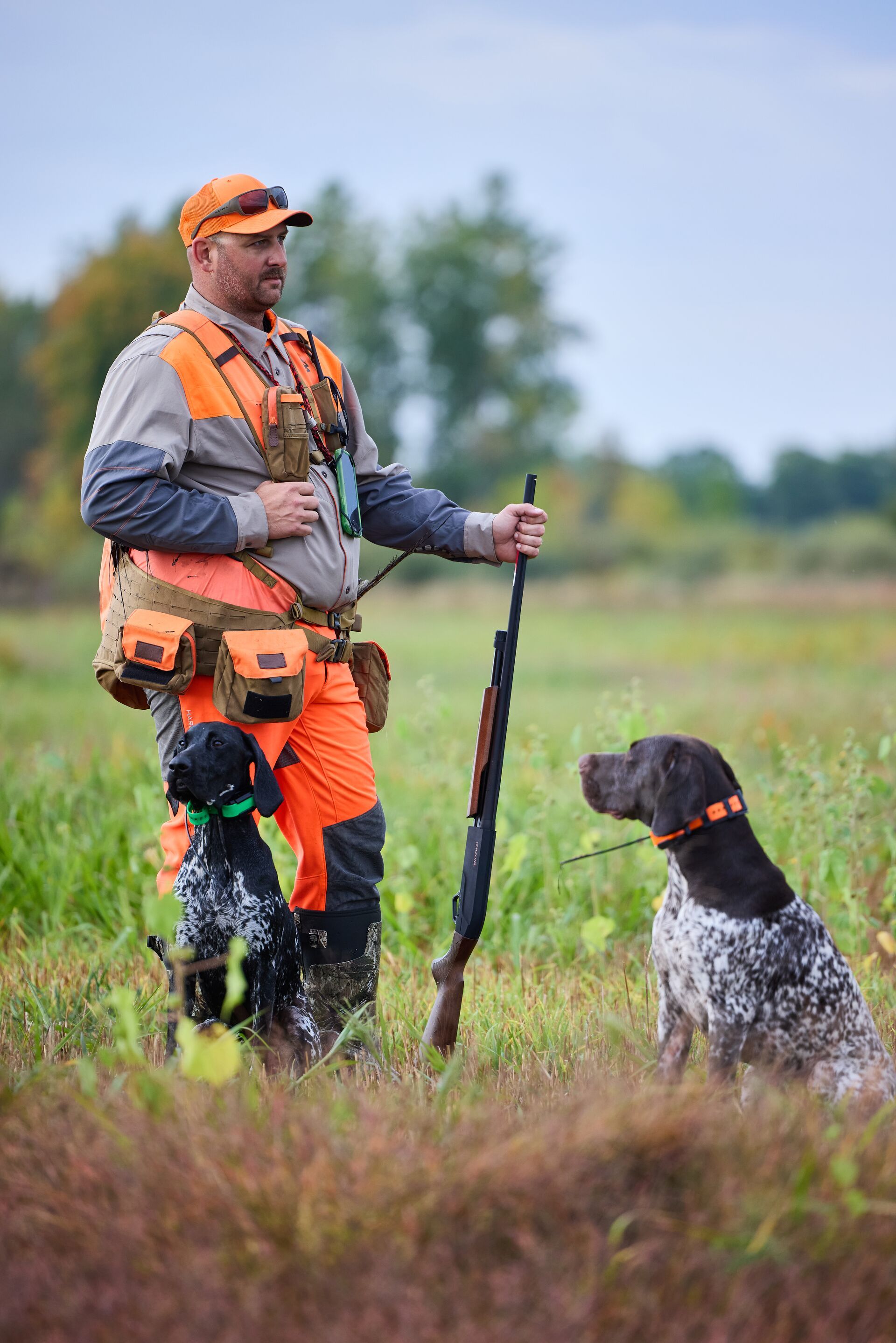
After firing, mark where the bird fell and go there immediately. If it runs, send the dog (if you have one) or carefully circle. A downed bird that vanishes is a complete loss.
After the Shot: Field-to-Table
For some hunters, the prep and use of the bird meat is their favorite part of pheasant hunting.
It is best to field-dress as soon as possible. Pluck if you want skin-on roasts, skin and breast out if you’re going for speed. Remove the crop and guts, and cool the bird quickly in a shaded cooler or in a cold-weather environment.
Cook It Up
Once in the kitchen, the pheasant has a more lean meat, so treat it like a fine white meat.
- Roast whole: Brine or marinate, rub with butter or bacon, roast ~350°F until the breast hits ~160°F, rest, and carve.
- Braise pieces: Brown thighs/legs; add stock and aromatics, then simmer. Legs tend to shine here.
- Sear breasts: Marinate and grill or pan-sear. Cut thin, cook hot and fast. Don’t overcook it or you’ll dry it out.
It’s always nice to freeze leftovers to enjoy later down the road. You can vacuum-seal in freezer bags, just make sure to label the date and “wild pheasant."
Hunt Smarter with HuntWise
Even a well-seasoned pheasant hunter can gain an advantage with the right tech.
- Make use of the HuntWise maps for property boundaries, locate public access, mark field edges, cattail pockets, and fence lines.
- Use the wind and forecast tools to plan approach direction, as hunting into or across the wind gives you scent control.
- Log your hunts, highlighting date, field, conditions, and bird contacts. Over time, you’ll identify patterns unique to your region and terrain.
HuntWise is the best tool for better pheasant hunts!
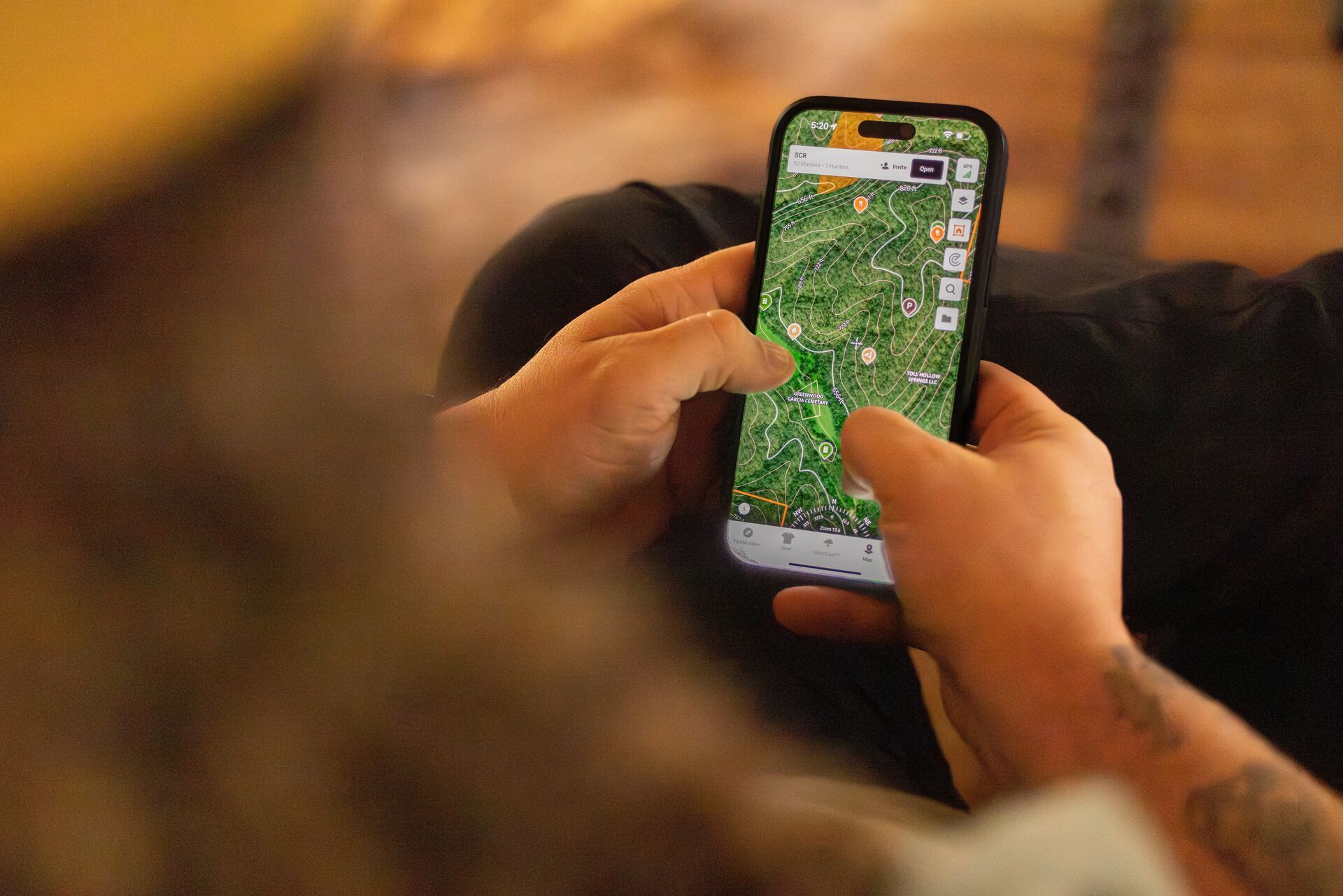
Use These Pheasant Hunting Tips and HuntWise for Better Hunts
Wild pheasant hunting is a test composed of long miles, dense cover, fast birds, and often unpredictable results. But the payoff can be immense for any sportsman.
A clean flush, a solid shot, the dog working ahead, and having that rooster in hand are all moments that make the reward worth the effort.
Walk with purpose, read the land, carry the right gear, aim cleanly, and respect the bird and landowner. The work ahead of you is real, but so is the reward.
Before you head out into the field, make sure you have HuntWise.
Download it and plan your pheasant hunt free during your first week in the app!
Frequently Asked Questions (FAQs)
We have answers to your questions about how to hunt pheasant!
Q: How do you prepare pheasant to cook? (Recipe?)
A: One way to prepare wild pheasant is to marinate the bird overnight in olive oil, herbs, and garlic. Roast at 375°F (190°C) for about 45–60 minutes, basting occasionally, until the meat is tender and juices run clear. You can also braise it slowly with wine or broth to keep it moist.
Q: Where do you find pheasants?
A: Wild pheasants are often found in farmland, grasslands, and field edges near crops or brush. You can also buy farm-raised pheasants from game farms, specialty butchers, or online wild game suppliers.
Q: What time of day is best for pheasant hunting?
A: Early morning and late afternoon are ideal. Birds are active and feeding during these cooler hours, making them easier to spot and flush.
Q: How do you find a pheasant without a dog?
A: Walk slowly along field edges, ditches, and tall grass, focusing on cover near food sources. Stop occasionally. Sudden pauses can make hidden pheasants flush. Listen for rustling and look for movement in the brush.
Previous in Small Game
Next in Small Game
More Content Like This
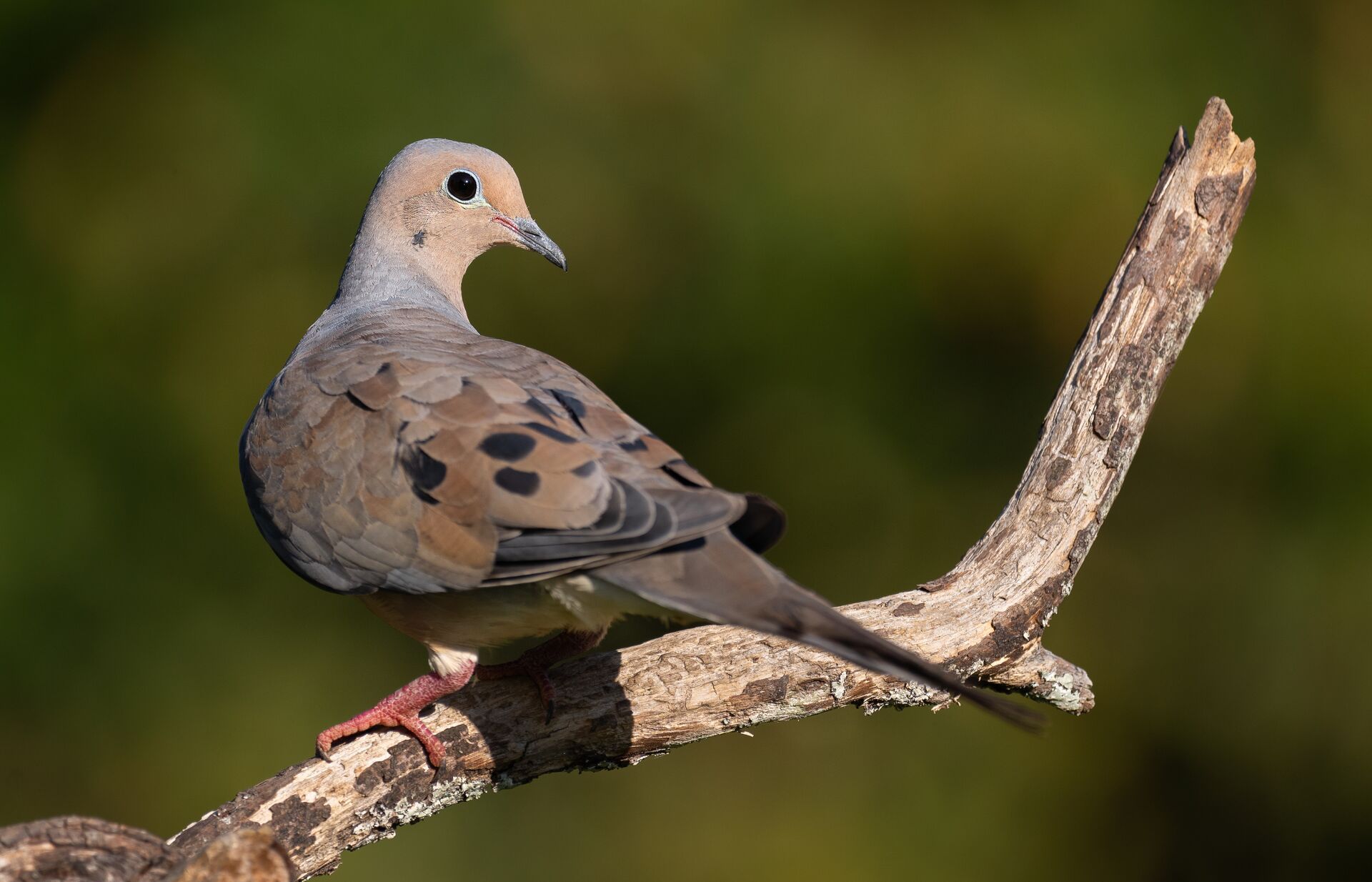
The Guide to the 2025 Dove Season Texas
Texas is home to world-class dove hunting, drawing in 400,000 hunters yearly and providing an influx of investment for rural landowners, locals, and the Texas Parks and Wildlife Department. Read More
Read More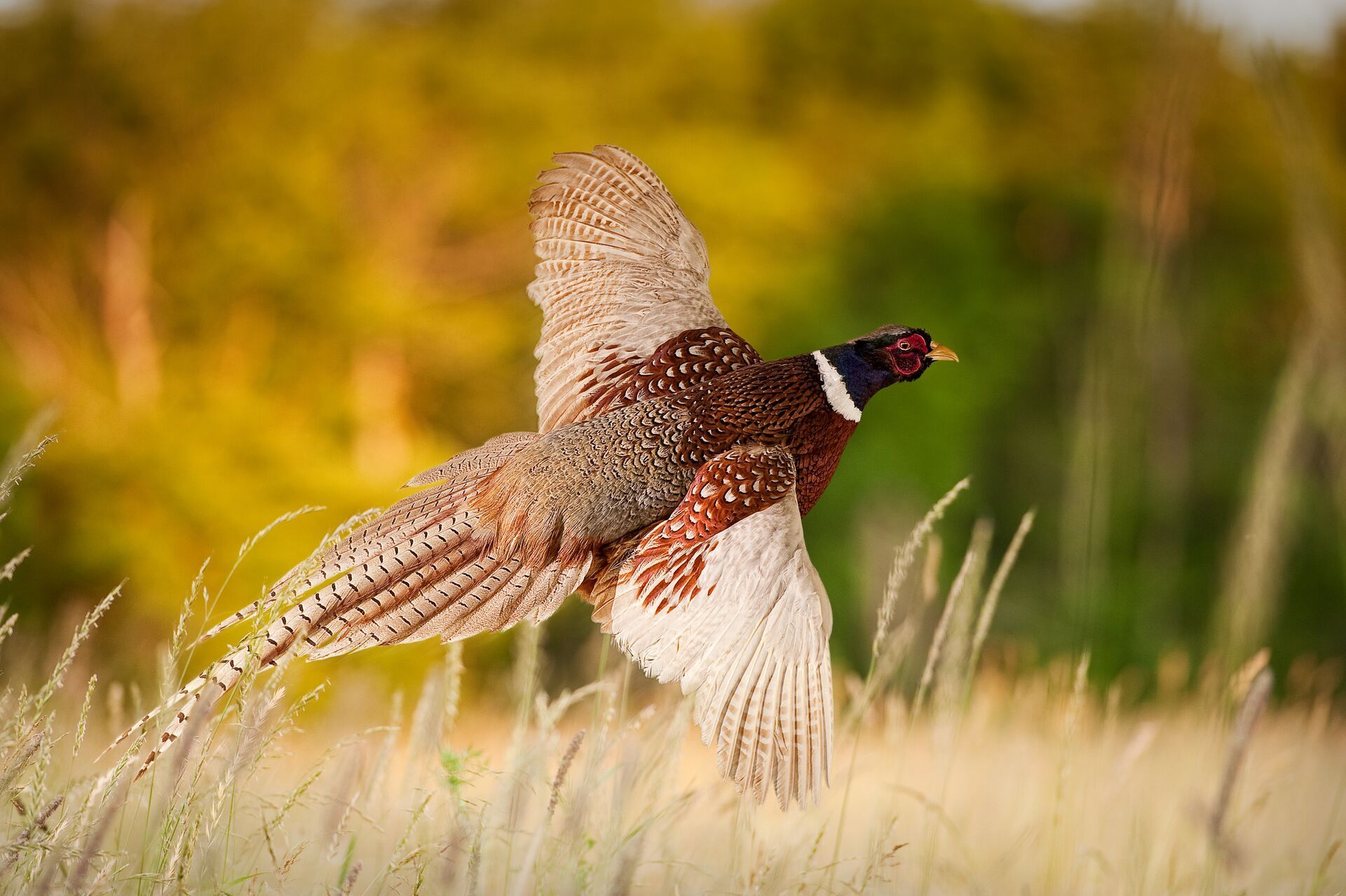
The Best Pheasant Hunting States (and How to Hunt Them)
If you've got the means and opportunity, we're big fans of traveling to explore and hunt different states, even if it's just to learn something new or gain experience. Pheasant hunting opens up a world of other opportunities and exciting challenges. Read More
Read More
17 Must-Have Items for Your Dove Hunting Setup
Dove hunting is an inexpensive, social, fast-paced sport that brings families and friends together to enjoy the outdoors. While it's relatively easy to get started and doesn't require the equipment, camouflage, and travel of other bird species hunts,...Read More
Read More Small Game
Small GameThe Guide to the 2025 Dove Season Texas
By Teri Williams | 07/26/2024Texas is home to world-class dove hunting, drawing in 400,000 hunters yearly and providing an influx of investment for rural landowners, locals, and the Texas Parks and Wildlife Department. Read More
Read More Small Game
Small GameThe Best Pheasant Hunting States (and How to Hunt Them)
By Teri Williams | 08/12/2025If you've got the means and opportunity, we're big fans of traveling to explore and hunt different states, even if it's just to learn something new or gain experience. Pheasant hunting opens up a world of other opportunities and exciting challenges. Read More
Read More Small Game
Small Game17 Must-Have Items for Your Dove Hunting Setup
By Teri Williams | 06/24/2025Dove hunting is an inexpensive, social, fast-paced sport that brings families and friends together to enjoy the outdoors. While it's relatively easy to get started and doesn't require the equipment, camouflage, and travel of other bird species hunts,...Read More
Read More
1 of 3
